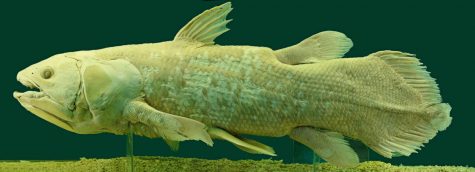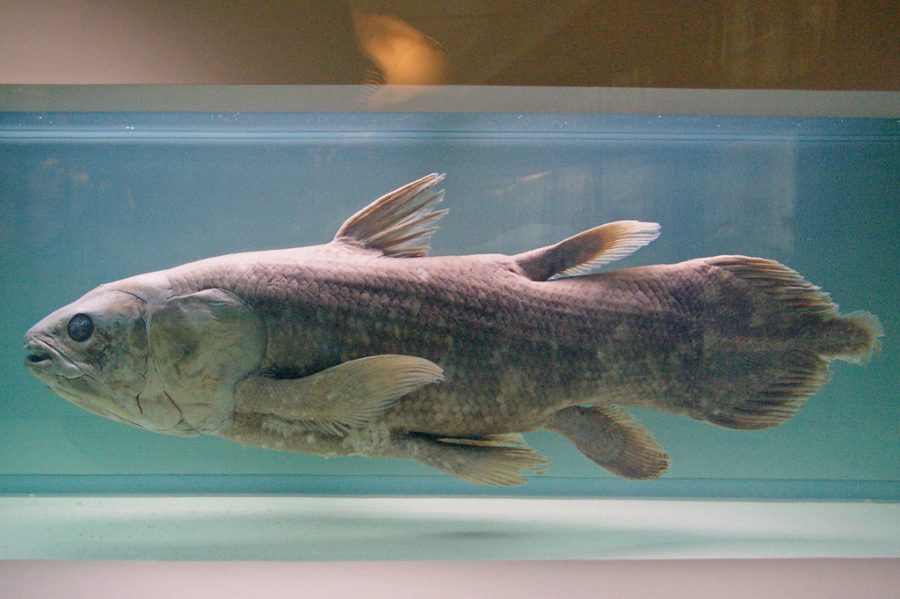The Coelacanth: A Fish that Came Back to Life, or a Living Fossil?
Source: Jolivet Daniel
“Coelacanthe” by sybarite48 is licensed under CC BY 2.0
The oceans on Earth cover around 70% of our planet, however, less than 5% of the ocean has been explored. Many undiscovered aquatic life forms still exist and are waiting to be documented or discovered. In addition, the majority of most well-known undersea animals are also from the surface of the ocean. Meaning, if you lived in the dark depths of the ocean, good luck being found.
One rare and uncommon deep-sea creature is the Coelacanth (Pronounced SEEL-uh-Kanth). Populations of coelacanths were alive at the same time as dinosaurs, and surprisingly, they haven’t drastically evolved or changed at all. You may ask yourself, “If coelacanths have been around since the age of the dinosaurs, how come I haven’t heard of them before?”. This is because scientists thought that coelacanths were wiped out in the same accident that killed the dinosaurs and became extinct. Coelacanths live in and around deep marine caverns, which makes them hard to find and study.

In 1938, Marjorie Courtney Latimer found a fish that she thought was a Coelacanth but didn’t have enough time to study it live before the fish died. She was able to confirm her idea when she showed the now taxidermied animal to a fish expert; J. L. B. Smith. The next live Coelacanth was discovered in 1952, in the Comoros Islands, where scientists were able to study it more closely. Years later, a new species of Coelacanths were discovered around Indonesia, finally extinguishing the belief that Coelacanths were extinct.
Although much more is known about the Coelacanth, they are still a rare species of fish and must be protected. There are still many things to learn and discover about this mysterious creature. From what we know, humans and human activity are the only threats to Coelacanths, so we must be mindful about how we treat our oceans and aquatic life unless we want Coelacanths to become truly extinct.
Related Articles & Websites:
https://www.nationalgeographic.com/animals/fish/group/coelacanths/
https://ocean.si.edu/ocean-life/fish/coelacanth
https://www.wired.com/2015/03/creature-feature-10-fun-facts-coelacanth/















